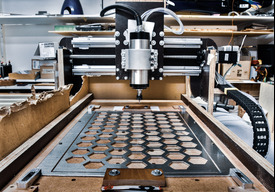Gantry Style CNC from plywood
Discussion in 'CNC Mills/Routers' started by C-CNC, Nov 1, 2018.
Gantry Style CNC from plywood
Discussion in 'CNC Mills/Routers' started by C-CNC, Nov 1, 2018.
I am currently 15 years old, from Germany and trying to build a low budged CNC router. I only designed this CNC based on other CNC routers that I have seen and what I am able of. It consists mostly of 2.3cm plywood to keep costs down. The size of the work area is approx. 40 x 80 cm. I would be really glad if you could give me advice's for improvement on the design and everything else ... ( I could really need your help :) ) enjoy :)
Tags:
Page 1 of 2
Page 1 of 2
